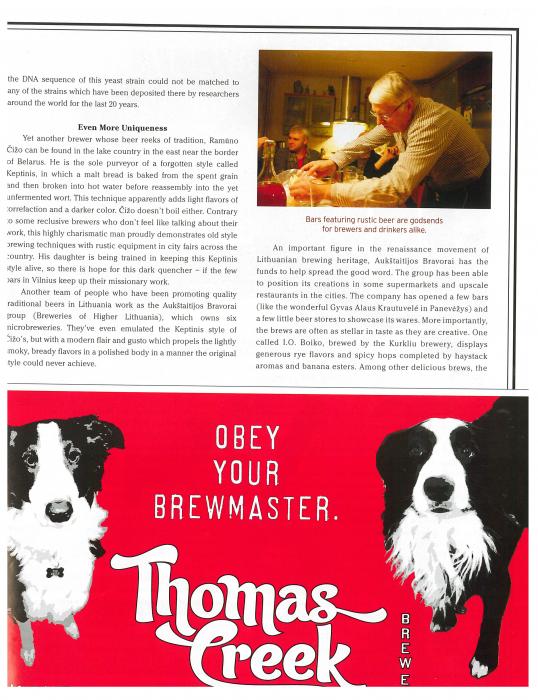Hey guys,
So my background is Lithuanian (both parents were born in Canada but are Lithuanian too), I still speak, read and write the language reasonably well thanks to my folks, grandparents and Lithuanian community in which I grew up (Toronto).
I too came across the article in the Beer Connoisseur magazine a while back, and archived it in my mind for something to try at a later date. Since moving to Chicago about 7 months ago (which also has a HUGE Lithuanian population) I have had to put brewing on hold due to ongoing renovations at our new place. I finally couldn't stand waiting any longer and got back to brewing this past weekend. However, since renovations are still ongoing I still haven't been able to set up my electric system (no space yet), but I was able to do a BIAB version on the stovetop.
The equipment I used was a 10 Liter (2.5 gallon) stainless pot on the stove top, and like other BIAB brewers a nylon bag to hold the grain. Here was the recipe:
1.25 lbs 2 row malt
1.25 lbs 6 row malt
1 lbs Crystal 80 malt
1/2 container Bries Amber LME (not sure of the weight)
2 oz Hallertau (3.5% AA) pellets
1.0 vial WLP665 Flemish Ale Blend
1.0 vial WLP005 British Ale Yeast
Est. OG 1.080
I milled all the grains separately. I added 1.25lbs of the 2 row and 1.25 lbs of the Crystal 80 to my bag and tied it off. I filled my kettle with 7 L of water and brought it up to 165F at which point I added the grain bag and turned the heat way down. I mixed well to make sure there were no dry spots within the grain bag.
At the same time as mashing in, I mixed the other 1.25 lbs of 6 row with 1.5L of water in a bowl, mixed thoroughly and spread it on a baking sheet lined with aluminum foil. I proceeded to bake the "bread" for 1.25 hours at 375F.
After 1.25 hours I scrapped all the caramelized "bread" from the tray and added it to my mash bag.
In total I let the mash sit for 5 hours. Monitoring the temp and maintaining somewhere between 155-165F.
While the mash was resting, I measured 1 L of water into a smaller pot, added 2oz of Hallertau hop pellets and brought the mixture to 165F and let it sit for an hour.
After mashing for 5 hours I brought the temp up to 170 and left it for another 15 min.
After this I removed the grain bag and turned the burner up to high to get the wort to start boiling. While that was going on, I placed the grain bag in a collander over a pot and poured 1.5L of 170F water over it to extract the remaining sugars. This second running wort was added to the kettle.
In total, after grain absorption I ended up with 7.5L of wort (pre-boil)
Once the wort was boiling, I added 1/2 the hop "tea", at 30 min I added the rest.
Total boil time 70 min with a nice rolling boil.
After that, I used an immersion chiller directly in the kettle to get down to 80F. I ended up with an OG of 1.084, a little higher than expected (boil off was a little greater than expected)
I siphoned off equal amounts into 4 cleaned and sanitized growlers. Pitching the Flemish yeast into 2 of them and the British yeast into the other two. As of this morning they all look like they're fermenting quite nicely.
I'll update in a couple of weeks. And let you know how it went












